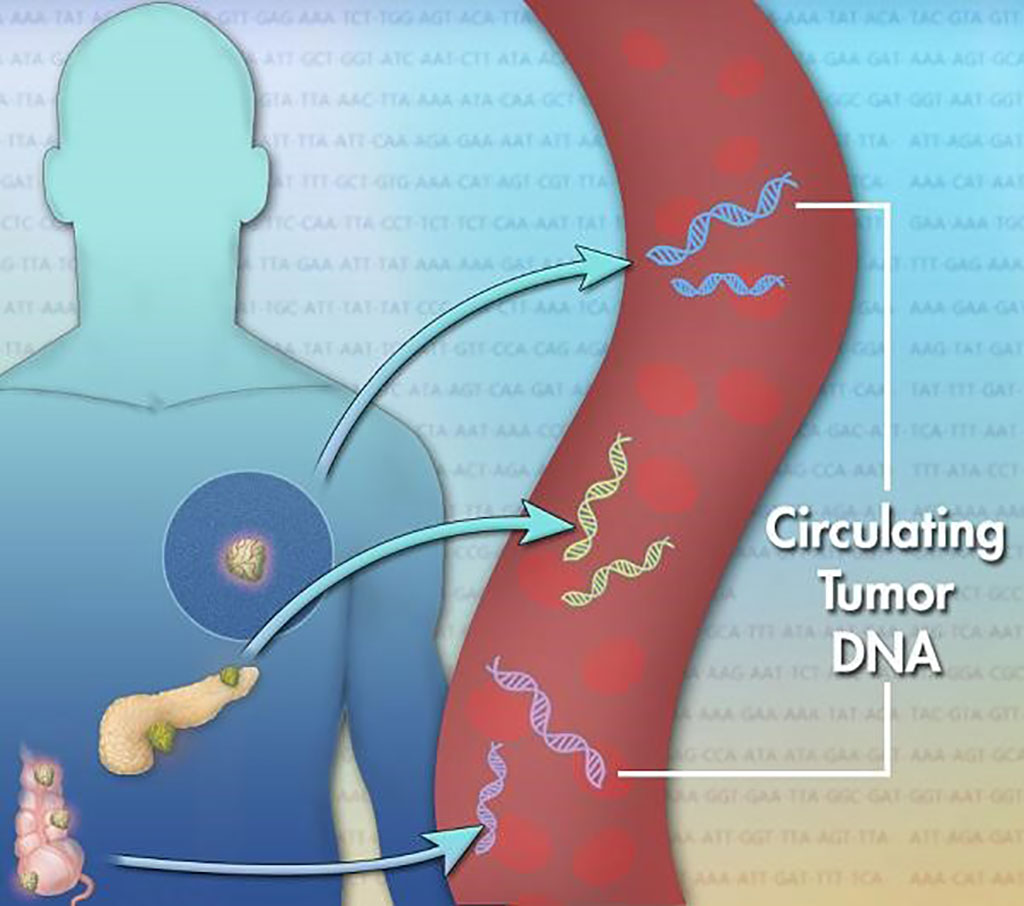Liquid Biopsy Test Tracks Treatment-Based ctDNA Changes
By LabMedica International staff writers
Posted on 06 Oct 2021
Metastatic or unresectable disease is identified in approximately 20% of patients presenting with invasive urothelial cancer. In addition, up to 50% of patients will develop metastases following radical cystectomy for clinically localized disease. Posted on 06 Oct 2021
Multiagent cisplatin-based chemotherapy is considered standard first-line treatment for these patients. Although urothelial cancer is considered a chemosensitive tumor, metastatic disease is associated with poor prognosis and short-term survival.

Image: Circulating tumor DNA (ctDNA) is found in the bloodstream and refers to DNA that comes from cancerous cells and tumors. The LiquidHALLMARK assay, a liquid biopsy test, tracks treatment-based ctDNA changes (Photo courtesy of Jonathan Bailey, National Human Genome Research Institute)
Medical Scientists collaborating with those at the Dana-Farber Cancer Institute (Boston, MA, USA) followed 45 participants with metastatic urothelial carcinoma, or mUC, 39 of who underwent immune checkpoint inhibitor, or ICI, therapy while six received cisplatin-based chemotherapy. The median age was 68 years, 79% of patients were male, and 97% had urothelial histology. The majority (82%) received single-agent ICI (PD1/L1 inhibitor). Median duration between pre and post samples was 6.2 months.
Investigators collected plasma samples before therapy and about six months afterwards, then correlated changes in circulating tumor DNA (ctDNA) with objective response using the LiquidHALLMARK assay (Lucence, Palo Alto, CA, USA). Paired pre and post samples underwent ctDNA evaluation with 7 to 30 ng of DNA using an 80-gene panel which employs an amplicon-based NGS assay, including fusions (Lucence, LiquidHALLMARK). The primary objective was to evaluate ctDNA alterations pre- and post-ICI, and to correlate with objective response.
The investigators reported that the most common variants pre- and post-ICI were in TP53 (54% and 49%), TERT (49% and 49%) and BRCA1/2 (36% and 33%). Nine patients were responding to ICI at time of post-ICI blood collection, with seven (78%) showing clearance of ≥1 ctDNA variants, most commonly in TP53, PI3KCA, and BRCA1/2. In 18/20 patients (90%) who were progressing at time of post-ICI collection had emergence of a new alteration, most commonly in BRCA1/2, PI3KCA, CCND2/RB, and TP53. BRCA1 and PIK3CA mutations emerged in only one and zero chemo patients. Patients who cleared TP53 alterations during ICI had a higher likelihood of response compared to those who did not (50% versus 17%).
Guru Sonpavde, MD, a Medical Oncologist and the principal investigator said, “This is somewhat impressive because in most ctDNA platforms, there is not such a high percentage of patients where you see ctDNA alterations.”
The authors concluded that ctDNA alterations were detected in 96% of pre/post-ICI samples overall. Clearance of TP53 alterations during ICI therapy was associated with response, while emergence of BRCA1/2 or PI3KCA variants appeared to be associated with resistance. The study was presented at the European Society for Medical Oncology Virtual Congress held September 16-21, 2021.
Related Links:
Dana-Farber Cancer Institute
Lucence














